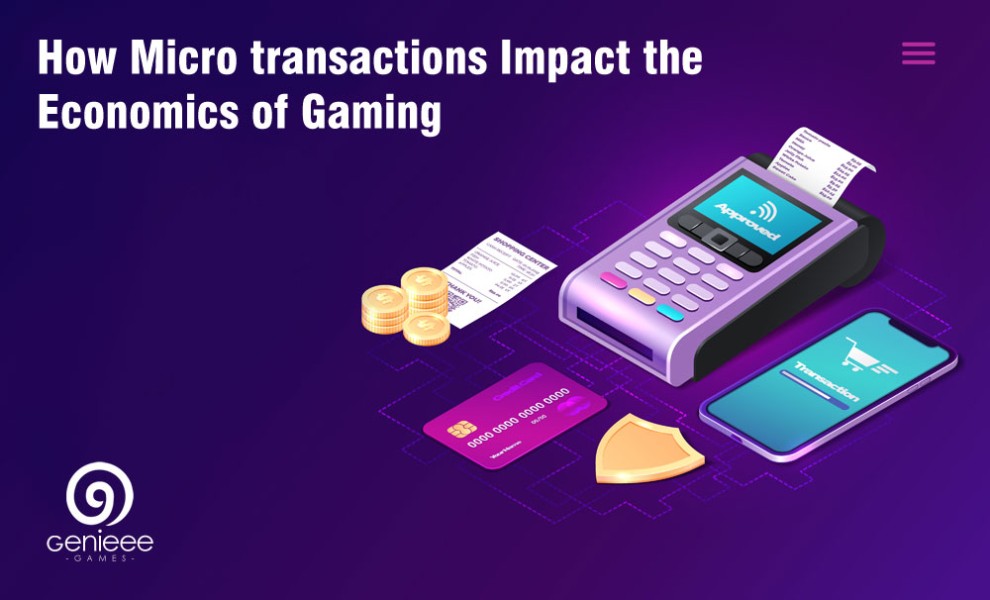Mobile games used to operate like big-budget flicks. The games passed times of development with rigorous testing and debugging before the final product was released. Also, the assiduity was revolutionized by the conception of online connectivity by HTML5 game development company . Additions similar to downloadable content (DLC) proved to be necessary for getting gamers to pay for products after the game had formerly been released. DLC is part of gaming’s secondary request and a precursor to what gamers know now as micro transactions.
KEY TAKEAWAYS
Micro transactions — small quantities of value changed electronically — have come decreasingly popular in videotape gaming.
These allow gamers and observers to make in-game purchases of particulars or spoil boxes and tip players to Buy HTML5 games.
While utmost press releases still make plutocrats from dealing with a hard dupe or digital interpretation of the game itself, newer platforms like Fort night see profit coming nearly entirely from micro transactions.
What Is a Microtransaction?
A micro transaction is a business model where druggies can buy virtual particulars for small quantities of a plutocrat. Micro transactions frequently appear in free-to-play games, meaning there’s no cost to download the game, just a cost to buy the online virtual products.
The videotape game assiduity is in a perpetual state of change, and micro transactions have had the most significant impact. Game inventors have learned to take advantage of this new profit source. It’s estimated that only 5 to 20 game communities take part in micro transactions, and the quantities they spend vary. Still, this is still a significant quantum, as the profit generated is enormous for free-to-play games. Directors at these companies aim to monetize the player base that isn’t partaking in the micro transaction community for driving further growth.
Companies That Benefit From Microtransactions
The videotape game assiduity reached a record of$ 36 billion in profit for 2017, according to data from the Entertainment Software Association (ESA) and The NPD Group.
Hoot the company that owns and runs the online game League of Legends” (LOL) benefits extensively from micro transactions. LOL is played by knockouts of millions of people worldwide, and it’s fully free to download and play. Nearly all of its profit comes from in-game purchases.
LOL allows for the purchase of Riot Points, and this in-game currency is also used to buy skins, which are different aesthetic choices for the in-game characters. The in-game currency can also be used to unleash different characters. These options can frequently be uncorked with extended gameplay, but the micro transactions offer an incitement to unleash them snappily.
Numerous of these micro transactions come from a small quantum of the player base since utmost gamers choose not to take part in micro-transactions.
Epic Games’ release of Fort night has proven to be a huge success. Fortnight is a free-to-play game where outside of 100 players join a match and fight until the last person or team remains. Like LOL, it relies upon in-game purchases for skins and power-ups. Grand blazoned in May 2018 that they were planning to give$ 100 million in prize pool plutocrat for their forthcoming season of eSports competitions.
The Rise of eSports
Counter-Strike Global Offensive (CSGO) is a classic illustration of an eSports game that also features micro transactions. It was released in 2012 and launched at$14.99 – a cost that does not qualify as free-to-play but is small relative to the$ 50 to$ 70 price label of utmost big games.
Its high-budget counterparts similar to” Call of Duty” and”Halo 4″ outpaced CSGO, and its player base began to slide until the company introduced commodity fully ornamental that added a new aesthetic faculty to the game.
CSGO is a first-person shooter that introduced skins for its ordnance. This added an entirely new profitable dynamic to the game. At the end of each game, players were awarded arbitrary beaters of munitions, and they could only be opened with a key that bring$2.49. Once the beaters were opened, players would get multiple arbitrary armament skins or rare particulars.
Introducing this to the game led to an increase in fashionability and reignited its character among suckers. Events have prize pools of these particulars, and there’s indeed an in-game frugality being created around this point that has real-world profitable consequences.
Exemplifications of In-Game Microtransactions
Micro transactions help in integrating a real-world request into in-game husbandry.
For illustration, Fort night uses an in-game virtual currency called”v-bucks” that its players can either earn through gameplay or purchase using real cash (or credit). V-bucks are used to buy particulars similar to skins and to unleash several retired features within the game. On top of that, Fort night players may also buy a” battle pass “to accumulate game awards and advance through the game’s categories more snappily.
There’s also a CSGO community of professional players who make real plutocrats, admit particulars that are paid for with real currency, and win cash prizes. The micro transaction-grounded approach is at the van of the assiduity to make plutocrat off of videotape games.
The Bottom Line
The use of micro transactions in the gaming and e-sports communities is changing the way that game companies induce earnings and allows lesser inflexibility for gamers and observers of gamers likewise to enjoy and interact with videotape games.
Contend Threat Free with$ in Virtual Cash
Put your trading chops to the test with our FREE Stock Simulator. Contend with thousands of Investigator dealers and trade your way to the top! Submit trades in a virtual terrain before you start risking your own plutocrat. Practice trading strategies so that when you are ready to enter the real request, you’ve had the practice you need.
